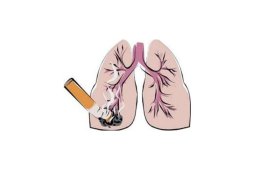Categories
- Bariatric Surgery (11)
- Black Fungus (5)
- Bone Marrow transplant (3)
- Brain Tumor Surgery Navigation Technology (20)
- Cardiac Surgery (66)
- Cardiology (97)
- Computer navigation technology for joint replacements (20)
- Covid Vaccination (17)
- Critical Care (2)
- Dental (19)
- Dermatology (31)
- Dialysis Support Group - “UTSAAH” (11)
- Dietitian (33)
- Emergency Medicine (4)
- Emotional Health (11)
- Endocrinology (33)
- ENT (20)
- Gastroenterology and GI Surgery (53)
- General and Laparoscopic Surgery (21)
- General Surgery (4)
- Gynecology & Obstetrics (183)
- Hematology (20)
- Internal Medicine (294)
- Kidney Transplant (50)
- Kidney Transplantation (20)
- Lung Cancer (8)
- Minimal Invasive Surgery (1)
- Mother & Child (20)
- mucormycosis (5)
- Nephrology (61)
- Neurology (147)
- Neurosurgery (68)
- Nutrition and Dietetics (107)
- Omicron Variant (1)
- Oncology (288)
- Ophthalmology (10)
- Orthopaedics & Joint Replacement (86)
- Paediatrics (59)
- Pediatric Nephrology (3)
- Physiotherapy (5)
- Plastic & Reconstructive Surgery (6)
- Psychiatry and Psychology (90)
- Psychologist (28)
- Pulmonology (72)
- Rheumatology (13)
- Spine Services (21)
- Transradial Angioplasty (16)
- Urology (84)
Query Form
Posted on Apr 19, 2022
Tobacco and Lung Cancer
As we all know that 31st May of every year is celebrated as No Tobacco Day. It is not just a day of advocacy, but a day of introspection. Do you know cigarette smoking is the number one risk factor account for 90% of lung cancer and causes cancers of the mouth, nose, throat, voicebox (larynx), esophagus, liver, bladder, kidney, pancreas, colon, rectum, cervix, stomach, blood, and bone marrow (acute myeloid leukaemia) i.e. it can cause cancer of any part of body.
Tobacco and Lung Cancer:

Using tobacco products in any form such as cigars or pipes also increases the risk for lung cancer. Tobacco smoke is a toxic mix of more than 7,000 chemicals. Many are poisons. At least 70 are known to cause cancer in people or animals. The latest government guidelines of displaying pictorial warnings on the cigarette packets are also equally beneficial in telling people about the harmful effects of smoking.
People who smoke cigarettes are 15 to 30 times more likely to get lung cancer or die from lung cancer than people who do not smoke. Even smoking a few cigarettes a day or smoking occasionally increases the risk of lung cancer. The more years a person smokes and the more cigarettes smoked each day, the more risk goes up.
People who quit smoking have a lower risk of lung cancer than if they had continued to smoke, but their risk is higher than the risk for people who never smoked. Quitting smoking at any age can lower the risk of lung cancer.
Smoke from other people’s cigarettes, pipes, or cigars (second hand) also causes lung cancer. When a person breathes in second-hand smoke, it is like he or she is smoking. In the United States, two out of five adults who don’t smoke and half of children are exposed to second hand smoke, and about 7,300 people who never smoked die from lung cancer due to second-hand smoke every year.
Quit Smoking
The immediate and long terms health benefits of quitting smoking are:
- Heart rate and blood pressure, which are abnormally high while smoking, begin to return to normal.
- Within a few hours, the level of carbon monoxidein the blood begins to decline. (Carbon monoxide reduces the blood’s ability to carry oxygen.)
- Within a few weeks, people who quit smoking have improved circulation, produce lessphlegm, and don’t cough or wheeze as often.
- Within several months of quitting, people can expect substantial improvements in lung function.
- Within a few years of quitting, people will have lower risks of cancer, heart disease, and other chronic diseases than if they had continued to smoke.
- In addition, people who quit smoking will have an improved sense of smell, and food will taste better.
- Quitting smoking reduces the risk of cancer and many other diseases, such as heart disease andCOPD, caused by smoking.
People who quit smoking, regardless of their age, are less likely to die from smoking-related illness than those who continue to smoke. Smokers who quit before age 40 reduced their chance of dying prematurely from smoking-related diseases by about 90 percent, and those who quit by age 45-54 reduced their chance of dying prematurely by about two-thirds.
People who quit smoking, regardless of their age, have substantial gains in life expectancy compared with those who continue to smoke. Those who quit between the ages of 25 and 34 years lived about 10 years longer; those who quit between ages 35 and 44 lived about 9 years longer; those who quit between ages 45 and 54 lived about 6 years longer; and those who quit between ages 55 and 64 lived about 4 years longer.



